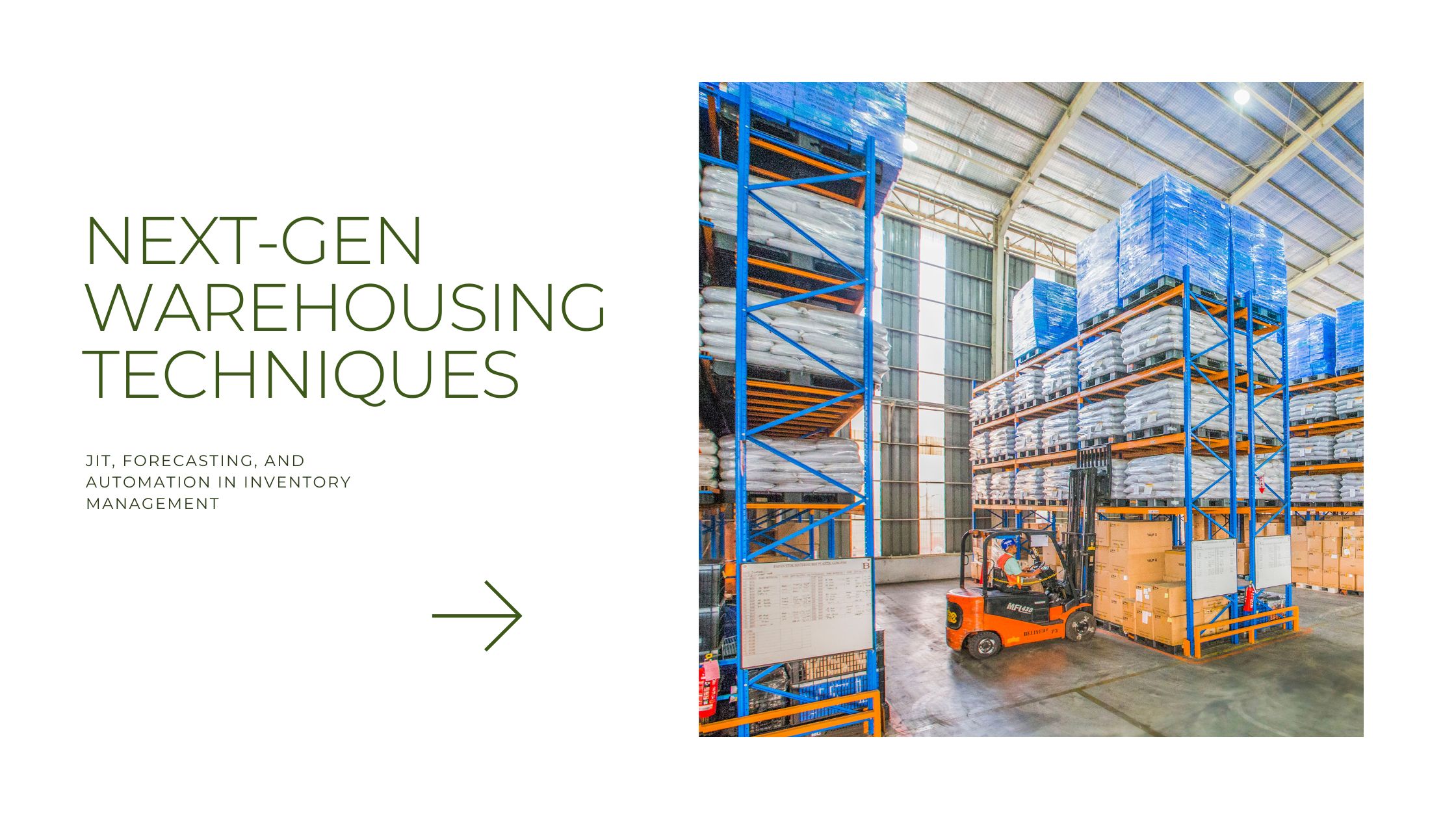The adoption of sophisticated warehousing strategies is not just a trend but a necessity, especially in the bustling trade hubs of the GCC region, where the flow of goods serves as the lifeblood of economic vitality.
The warehousing industry has been undergoing a quiet revolution. The sector went from a mere storage solution to a pivotal component of any supply chain.
Having the right warehousing solutions in place is essential for remaining competitive, particularly in the GCC region. That is a defining fact of today’s business world.
Why? Supply chains are expected to be both resilient and agile. So you are not only required to optimize operational costs but also enhance service levels to meet the expedited delivery expectations of a market that never sleeps.
We'll take a closer look at the three pillars defining the next generation of warehousing:
✅ Just-in-time inventory management,
✅ Demand forecasting methodologies,
✅ Automated picking and sorting.
I. Just-In-Time (JIT) Warehousing
Just-In-Time (JIT) warehousing is a strategy that aligns inventory levels with the precise timing of production and demand, minimizing the need for excess stock and reducing storage costs.
JIT simply matches supply with demand. Goods arrive at warehouses 'just in time' to be dispatched to customers, minimizing the need for surplus stock.
In essence, it’s about having the right products, in the right quantity, at the right time, and not a moment sooner. In the GCC's fast-paced economic environment, JIT is essential to decreasing inventory holding costs, particularly if the country relies heavily on imports. It also allows businesses to respond swiftly to market trends and consumer demands.
JIT is inevitably beneficial during the peak seasons and generally useful to sectors like FMCG, food, and beverage, as it helps minimize waste and maintain freshness by aligning food orders with transit times.
However, JIT’s implementation comes with its own challenges. The balance required for JIT to function effectively is susceptible to the unpredictability of supply chain disruptions, which can be influenced by:
- Regional geopolitical tensions,
- Customs procedures,
- Seasonal variances in trade flows.
Additionally, the reliance on timely deliveries demands a robust logistics infrastructure, which is continually being developed in the region.
II. Advanced Forecasting Techniques
Relying on simple projections and "gut feel" to forecast inventory needs doesn’t exist.
Advanced analytics tools can now reveal demand patterns and generate incredibly precise demand predictions. Forecasting in inventory management ensures that the flow of goods aligns with the ebb and flow of market needs.
Rather than basic techniques like moving averages, traditional forecasting methods, often based on historical sales data and simple extrapolation, are giving way to more data-driven approaches that easily interpret the complex signals of today's markets.
Advanced forecasting methods are multifaceted, employing complex statistical modeling and utilizing a combination of machine learning algorithms, artificial intelligence, and predictive analytics to parse through vast datasets.
These datasets include nearly everything from historical data to sales trends, external factors like weather or holidays, forward-looking economic indicators, consumer behavior patterns, and even social media sentiment, to produce sophisticated forecasts.
Here, “big data” has emerged as the powerful engine behind such advanced forecasting methods. By using the sheer volume of data generated every second—from point-of-sale systems, online transactions, and IoT devices—any business can now uncover insights that were previously inaccessible.
Analytics software can then process this data in real time, allowing us to make informed decisions swiftly. Thus reducing the likelihood of overstocking or stockouts. The precision of advanced forecasting enables a leaner inventory with fewer safety stocks, which translates directly to cost reductions.
That is why this pillar defines the next generation of warehousing, as space is used more effectively and inventory turnover rates increase. This level of operational agility allows businesses to respond rapidly to market shifts, offering a competitive edge that is particularly valuable in the fast-moving economies of the GCC and particularly the UAE market.
III. Automation in Inventory Management
Retrieval systems, robots scuttle along aisles, drones take flight for inventory checks, and AI algorithms make split-second decisions on stock management. These are the current realities for inventory management. Inventory is dynamically shuffled around with real-time tracking and optimal routing algorithms.
Automation technologies in warehousing come in various forms:
➡️ Automated Guided Vehicles (AGVs) and robots handle heavy lifting and repetitive tasks,
➡️ Drones provide aerial inventory snapshots,
➡️ Sophisticated AI systems predict demand and automate reordering processes.
Simply put, automation enables seamlessly integrated just-in-time management and forecast-based workflows, transforming warehousing operations. Automation enhances safety, too, by taking over tasks that are hazardous for humans. Additionally, automating repetitive manual tasks allows warehouses to utilize labor for more value-added roles.
Early automation adopters in the region, like Noon and Amazon in the UAE, highlight the tremendous gains in storage density, productivity, and efficiency possible. But upfront investment costs remain a barrier for many. Taking a phased approach can make automation more feasible.
IV. The Role of Vervo Middle East in Next-Gen Warehousing
For over a decade, Vervo Middle East has been at the forefront of bringing cutting-edge warehousing solutions to businesses across the EU and the GCC for every cargo type.
Our suite of offerings is as diverse as the market itself, with expertise spanning automated storage systems, distribution logistics, end-to-end inventory management, warehouse control systems, material handling equipment, and more.
We recognize that each supply chain has its own narrative, and our role is to equip businesses with a warehousing solution that fits seamlessly into their story.
That's why Vervo Middle East offers customizable solutions tailored to your specific requirements.
Our consultants collaborate with you to design and implement modern warehousing systems optimized for your inventory volumes, product mix, and workflow in the UAE and beyond, in over 120 countries.
To learn more about our next-generation warehousing solutions and request a free customized warehousing quote, contact us today at ☎️ +971508723352 or 📧

